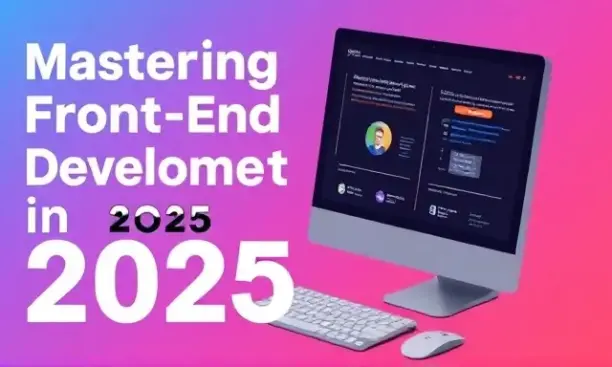Mastering Front-End Development in 2025: Exclusive Guide to Tools, Trends & Best Practices

Front-end development has evolved from basic HTML and CSS to a highly specialized discipline requiring knowledge of frameworks, performance optimization, security, and UX principles. In 2025, staying updated means mastering cutting-edge tools, understanding new workflows, and adopting best practices that align with user expectations and search engine standards.
📌 Why Front-End Development Matters More Than Ever
With users expecting lightning-fast and intuitive digital experiences, the front-end is now the backbone of web interaction. Developers must craft interfaces that are not only visually appealing but also accessible, responsive, and optimized for performance and SEO.
🔥 Most Popular Front-End Frameworks in 2025
-
React 19
Continues to dominate the market with features like React Server Components, concurrent rendering, and tight integration with TypeScript. -
Vue 3/4
Favored for its simplicity and flexibility, Vue’s Composition API and ecosystem (Nuxt, Pinia) make it ideal for scalable apps. -
Svelte
Its compile-time rendering and minimal runtime make it a performance favorite. SvelteKit enables full-stack capabilities.
🧰 Essential Tools Every Front-End Developer Should Master
- Vite: The fastest bundler and dev server for modern JavaScript.
- Tailwind CSS: Utility-first CSS framework still leading in 2025.
- TypeScript: Essential for large-scale, maintainable apps.
- Storybook: Component library development and documentation tool.
- Cypress / Playwright: Automated testing frameworks.
- Figma: UI/UX collaboration and prototyping.
⚡ Performance Optimization in 2025
Performance directly affects SEO and user satisfaction. Google continues to prioritize Core Web Vitals, including:
- Largest Contentful Paint (LCP)
- First Input Delay (FID)
- Cumulative Layout Shift (CLS)
Optimization Strategies:
- Lazy loading components and images
- Reducing unused JavaScript and CSS
- Using modern image formats (WebP, AVIF)
- Implementing SSR and hydration techniques
- CDN delivery with edge caching (Cloudflare, Vercel)
🎨 Design & Accessibility Trends
Front-end developers now play a key role in UX. Key 2025 design principles:
- Mobile-first and responsive grids
- Theme toggles (light/dark modes)
- Smooth microinteractions
- ARIA roles and WCAG 2.2 compliance
- Focus-visible states and keyboard navigation
🔐 Front-End Security Best Practices
- Security is no longer just a backend concern:
- Avoid exposing secrets in client code
- Use CSP headers to prevent XSS
- Sanitize user inputs at the front-end level
- Use HTTPS everywhere
- Secure authentication flows (OAuth2, JWT)
📚 Learning Resources (Updated for 2025)
✅ Final Thoughts
Front-end development in 2025 demands more than just technical skill—it requires an understanding of the full user journey. With the right tools, frameworks, and continuous learning, developers can create high-performance, accessible, and future-ready web applications.

Leave a comment